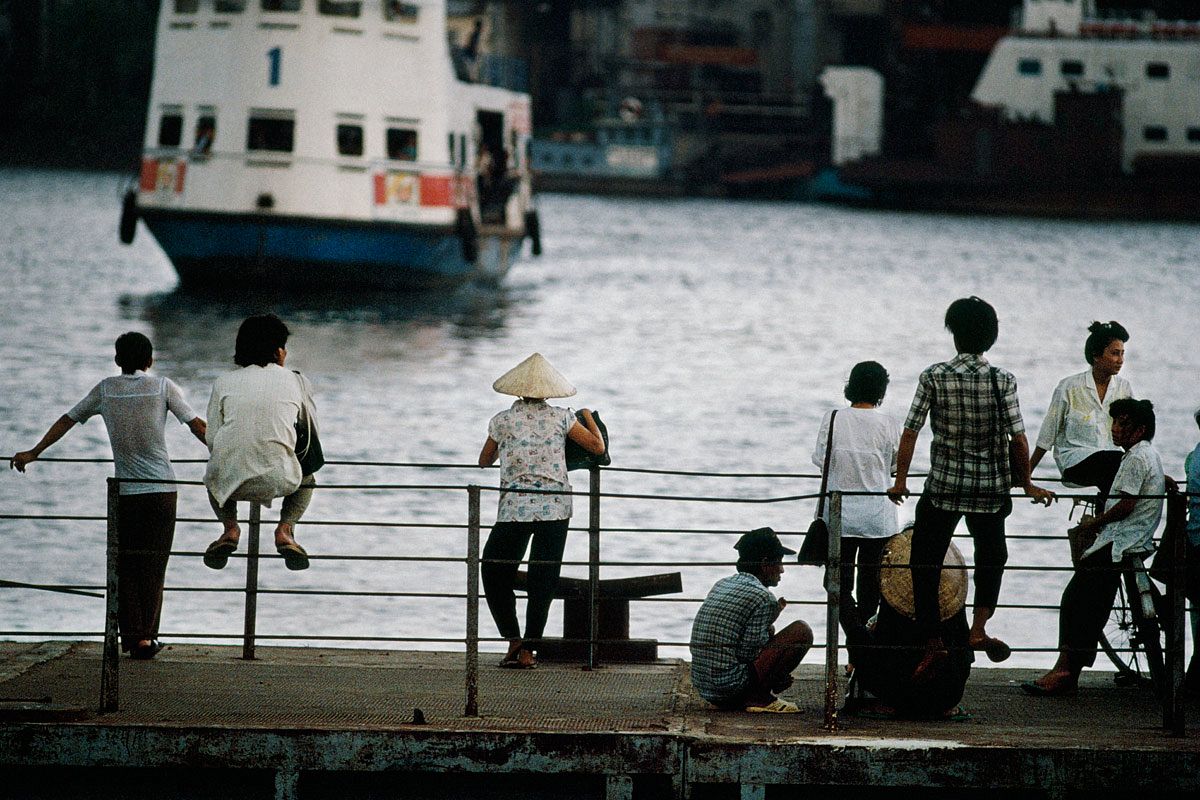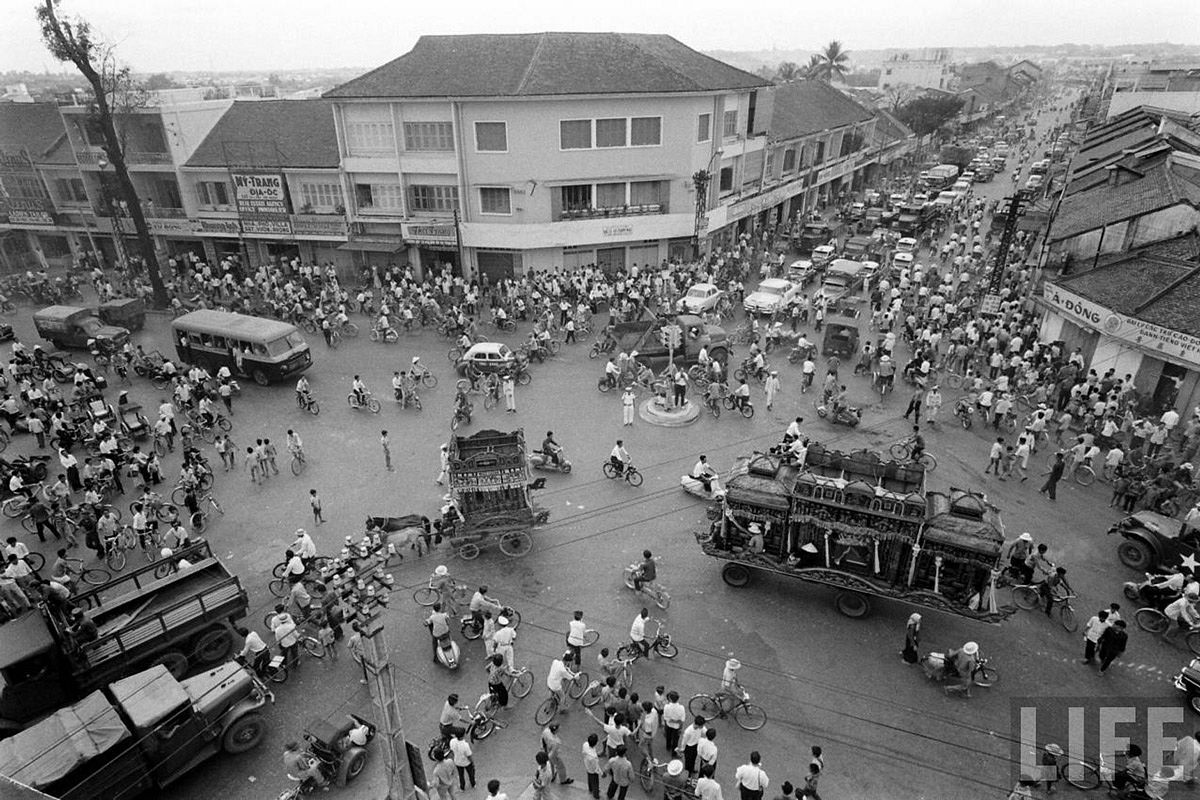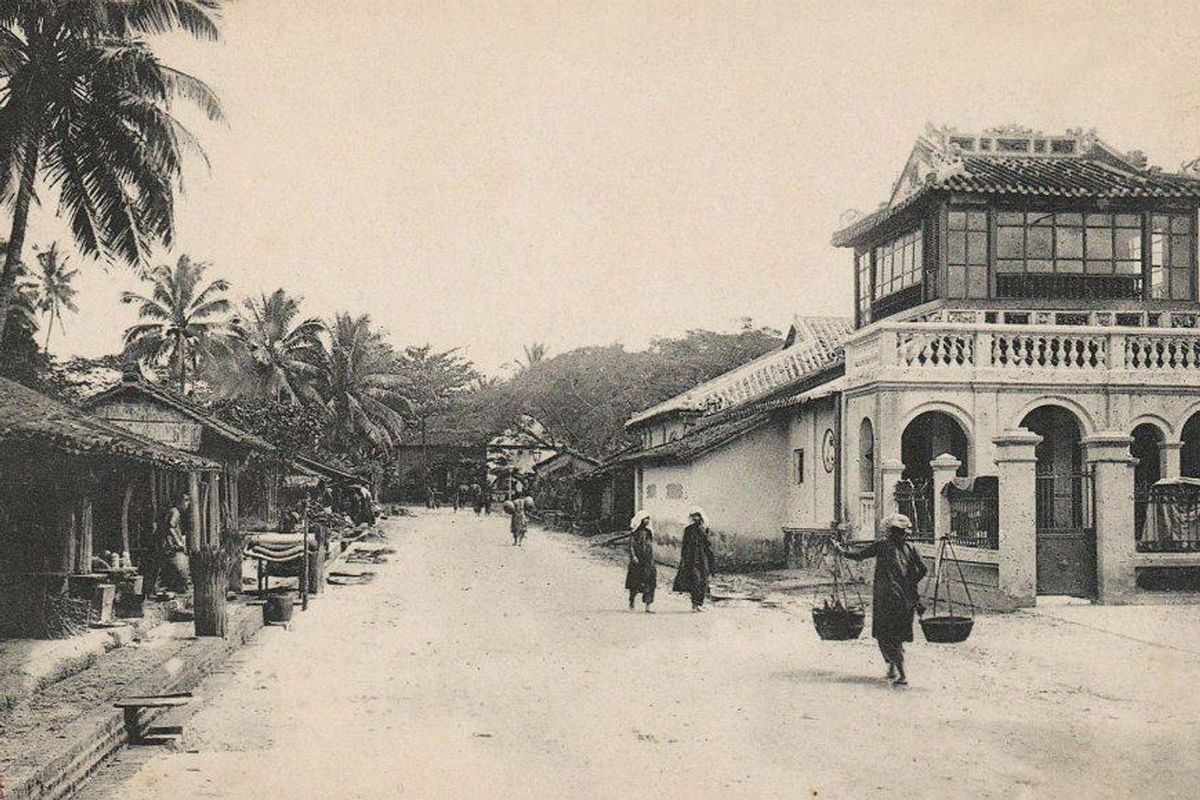Hidden behind the Department of Foreign Affairs building at 4-6 Alexandre de Rhodes is the last surviving relic of that neighbourhood’s long association with the Roman Catholic Church – an abandoned chapel of the Paris Foreign Missions Society.

The interior of the MEP Chapel.
The street known today as Alexandre de Rhodes first came into being in 1870, during the construction of the first Bishop's Palace. Not surprisingly, its earliest name was rue de l'Évêché (Bishopric street).

Rue de l'Évêché (Bishopric street), now Alexandre de Rhodes street.
Built between 1869 and 1877 at 6 rue de l'Évêché, that first Bishop's Palace is said to have replaced a “confiscated Annamite mandarin’s house” on rue Lefèbvre (modern Nguyễn Công Trứ street), which had served as a temporary episcopal residence since the time of the French conquest.
On 28 January 1897, the rue de l'Évêché was renamed rue Colombert, after Monsignor Isidore Colombert, who served as Apostolic Vicar of Western Cochinchina from 1873 to 1894.
However, for reasons which remain a mystery, it was subsequently decided to relocate the Bishop's Palace to what is now District 3. In 1911, a new episcopal residence – the current Archbishop’s Palace – was inaugurated at 180 rue Richaud (modern Nguyễn Đình Chiểu). As soon as the old building at 6 rue Colombert had been vacated, it was taken over by the Cochinchina government’s Political and Administrative Affairs Inspectorate (Inspection des Affaires politiques et administratives).

A 1920s view of the second episcopal residence – the current Archbishop’s Palace – at 180 rue Richaud.
At around the same time as the diocesan administration vacated 6 rue Colombert, the Paris Foreign Missions Society (Société des Missions Étrangères de Paris, MEP) built a representative office (Procure des Missions Étrangères) right next door at 4 rue Colombert. The MEP would remain there for the rest of the colonial period.

The only surviving photo of the former MEP building, taken in the latte 1950s when it functioned as the National School of Public Administration (Trường Quốc gia Hành chánh).
It’s said that on the morning of 23 September 1945, the Provisional Executive Committee of the South under Trần Văn Giàu (1911-2010) met in its offices to plan a campaign of armed resistance against General Gracey’s British troops and the French prisoners of war they had released and rearmed.
Following the departure of the MEP from Saigon in 1954, its former headquarters building was taken over by the government of the Republic of Việt Nam and transformed into the National School of Public Administration (Trường Quốc gia Hành chánh), while the old episcopal residence next door became the ROV Ministry of Foreign Affairs (Bộ Ngoại giao).

The 1961 Foreign Affairs Ministry (now Department) building which replaced the two church buildings at 4 and 6 Alexandre de Rhodes.
Five years later, the School was relocated to 10 Trần Quốc Toản (now 3 Tháng 2), permitting the ROV Ministry of Foreign Affairs also to take possession of the old MEP building. Then in 1961, both of the old church buildings at 4 and 6 Alexandre de Rhodes were demolished and replaced by a single large modern one. Since 1975, this has served as the offices of the Hồ Chí Minh City Foreign Affairs Department (Sở Ngoại vụ Thành phố Hồ Chí Minh).

An external shot of the MEP Chapel.
Remarkably, one relic survived the demolition of the old MEP building, and this still stands today in the rear yard of the Foreign Affairs Department compound.
Used for many years as a storeroom, the former MEP chapel at 4-6 Alexandre de Rhodes is similar in style to the chapel which stands in the compound of the Children's (former Grall) Hospital. Although it has not yet been formally dated, it is believed to have been built during the construction of the MEP compound in 1912.

The lobby of the MEP Chapel.
Despite its diminutive size, the chapel incorporates two transepts and a small rear balcony area, the latter accessed by a spiral staircase. Sadly, the original floor of the chapel has been lost and its stained glass windows have sustained some damage, but other interior decorative work remains intact.
It’s understood that the future of the chapel hinges on a decision regarding its ownership.

The apse of the MEP Chapel which incorporates its largest stained glass window.

Looking back towards the entrance the MEP Chapel - note the balcony, currently boarded up.

One of two east transepts in the MEP Chapel.

One of two west transepts in the MEP Chapel.

Part of the ceiling of the MEP Chapel.

The west side exterior of the MEP Chapel.
Tim Doling is the author of the walking tour book Exploring Hồ Chí Minh City (Nhà Xuất Bản Thế Giới, Hà Nội, 2014) and also conducts Heritage Tours of Saigon and Chợ Lớn - see www.historicvietnam.com.















